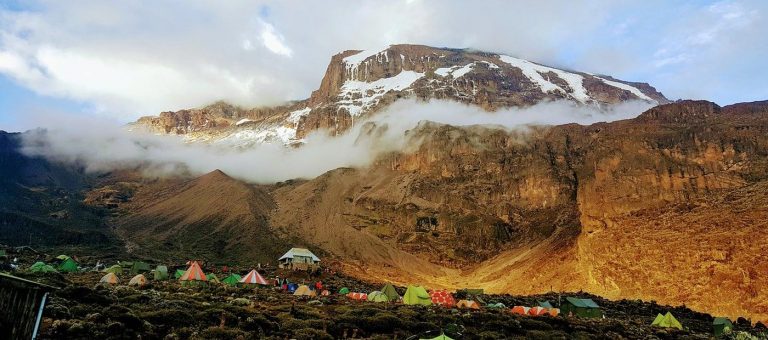Do you have what it takes for climbing Kilimanjaro, the roof of Africa? If you have an unstoppable hunger for adventures, it’s time to expand your travel bucket list and climb the Seven Summits.
Climbing mountains in different parts of the world can enrich your life.
It’s not only good for your physical health, but it can also allow you to see beautiful places and learn gratitude, patience, and persistence.
Moreover, there is a chance of meeting fellow travelers on the way and become their friend.
This experience can give you so much more than staying in hotels in the European capitals.
So, if you want to see all these untouched places and learn how to enjoy the little things in life, Kilimanjaro should be the first mountain on your list.
Kilimanjaro National Park is listed as a UNESCO World Heritage Site.
Africa’s highest mountain is one of the easiest to conquer (compared to the rest of the summits).
It’s the world’s tallest freestanding mountain, so all you need is to have a decent level of fitness and a bit of knowledge.
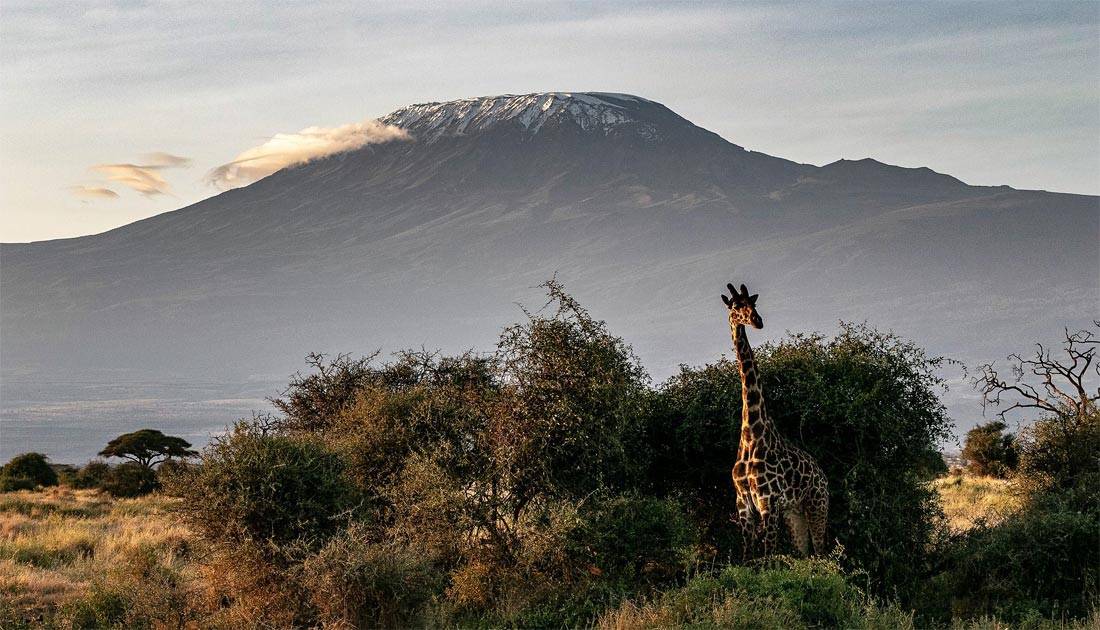
That’s what you need to know to get to the top of Mount Kilimanjaro without much training. Read our Kilimanjaro guide.
What is the Best Time for Climbing Kilimanjaro?
That is one of the most important decisions when you plan to climb Mt Kilimanjaro.
If you climb with bad weather, you risk a lot, you get lots of rain (and bad photos), fog, drizzle, lots of moisture and the climbing gets even harder than it is.
The good thing is that there are no winter and summer conditions there. There are more like dry and wet seasons. That is because the mountain is close to the equator.
So, what is the weather in Kilimanjaro per season?
April to June: March to June is when the rainy seasons occur. That is also the warmest time in Tanzania. Most operators avoid climbing in April and May.
June to August: Rain gradually fades out, but heat increases followed by the dry season.
August to October: That is the hot season for climbing Mt Kilimanjaro (both weather and packed with climbers). Clear days, with good warm weather.
Some times rainfalls occur on the southern routes and on the forest grounds, but only there. When you leave the forests things are fine. Mid to end of October is still fine but after that, the wet season starts.
October and November: Unstable weather, with occasional clouds and thunderstorms.
November and December: That is the small rainy season in the location. Temperatures drop and things get ugly with climbing. Avoid that season.
December and January: You may be surprised but this is the other hot season (packed with climbers, not hot weather) for the mountain. Lots of people despite the frequency of rainfall and clouds.
January to March: Another good season for climbing, especially after mid-January. The weather is not too wet and not too cold. Of course, if you plan for late March then the rainy season is closer.
If you can’t take your vacation time other than the not so perfect seasons then the smoothest route to choose is the Rongai route that goes through the northern side of Kilimanjaro, which is dryer than the other routes.
What Are The Best Routes to Climb Kilimanjaro?
At the moment, there are seven routes you can take to see stunning Kilimanjaro nature and get to the top.
Most people find it challenging to choose the right route, especially when there are so many options!
When choosing the path, make sure to take into account the route’s foot traffic, scenery, difficulty, and high altitudes acclimatization characteristics.
According to the latest statistics, most climbers prefer the Machame route (it’s located on the south of the mountain) and the Lemosho route (it’s located on the west).
Rongai, Shirma, and Northern Circuit are less popular. However, there is less traffic as well.
In case you are an experienced climber, you can also take the Umbwe route since it’s the most difficult one, and it has low traffic.
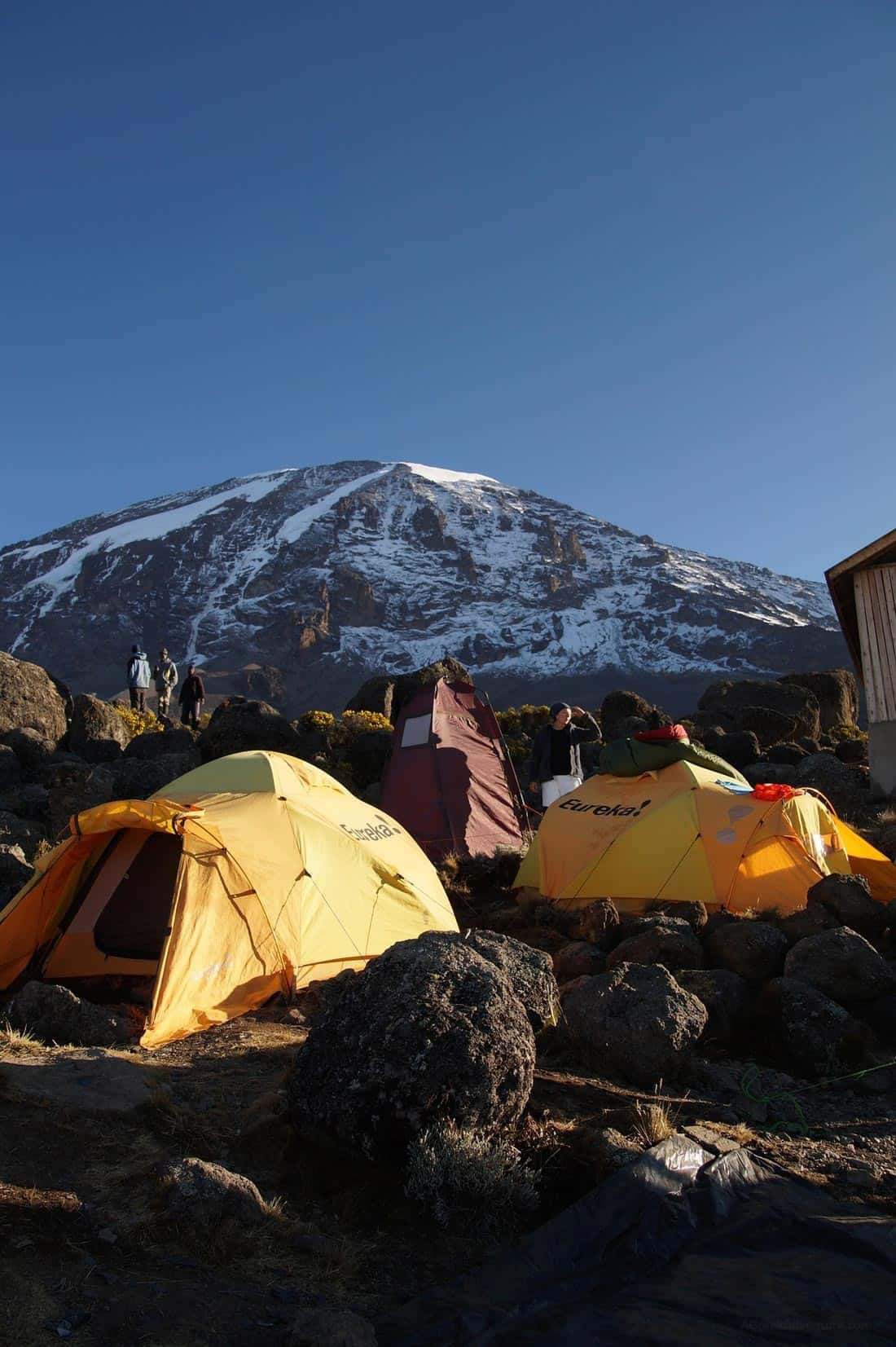
Here is what you can expect when taking the most popular routes to climb Mount Kilimanjaro:
Machame Route
According to experienced guides, the days on the Machame route are the longest due to its tourist crowds.
On the other hand, the scenery is impressive – it changes as you climb up higher.
Sometimes locals call this route ‘Whisky.’ Well, there is also Marangu’s “Coca Cola Route,” so you shouldn’t be surprised.
To avoid getting stuck on the road, you should hit the trail in the early morning.
It’s the only way to get ahead of the crowds and enjoy your climbing experience to the fullest.
The Machame route can take up to seven days. Some experienced climbers can hike faster, but there is no need to rush.
If you spend seven days on the way, your body will have enough time to get used to the altitude.
On your way to the top, you will sleep in a tent and eat meals outdoors.
You will need to trek for about seven hours a day to meet the timelines. So, start working out to prepare yourself for climbing.
The Machame route is pretty busy, but it is also relatively tough.
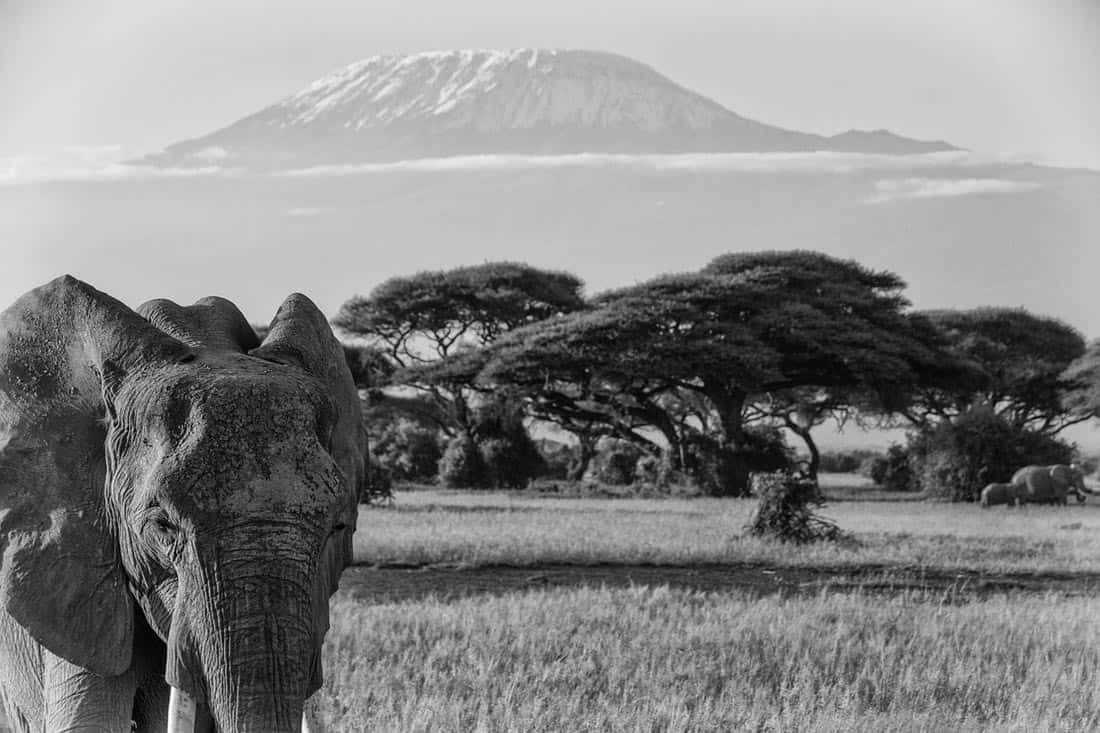
Marangu Route
As mentioned previously, Marangu Route is also known as Coca Cola route.
Climbers who take this route can get a bottle of Coke on every corner there. It’s not the same on the Whisky route (you wish!).
The Marangu route is considered one of the easiest.
On the other hand, it doesn’t have a high success rate due to climbers who want to get to the top in five days only.
According to experienced climbers, it’s better to give yourself more time to acclimatize. Poor acclimatization is one of the top reasons for climbers to fail on the way.
If you choose that route, you will have to hike from the south. It’s less scenic compared to other routes.
However, it’s the only route where you can find dormitory-style hut accommodation (you might want to bring earplugs with you!).
So, it’s a perfect option for those who don’t want to sleep in a tent or pee in the bushes. You will need up to eight days to climb up to the summit with this route.
Lemosho Route
The best thing about the Lemosho route is that it has the lowest traffic. It’s the newest route on Kilimanjaro, and it has high success rates.
So, if you choose this route, you will need about eight days to get to the top.
It’s important to mention that Lemosho is the most scenic trail on the Kilimanjaro, so you will not be bored a single day!
The guides recommend climbers to work on their physical condition before taking the Lemosho route. However, technical climbing is not required at all!
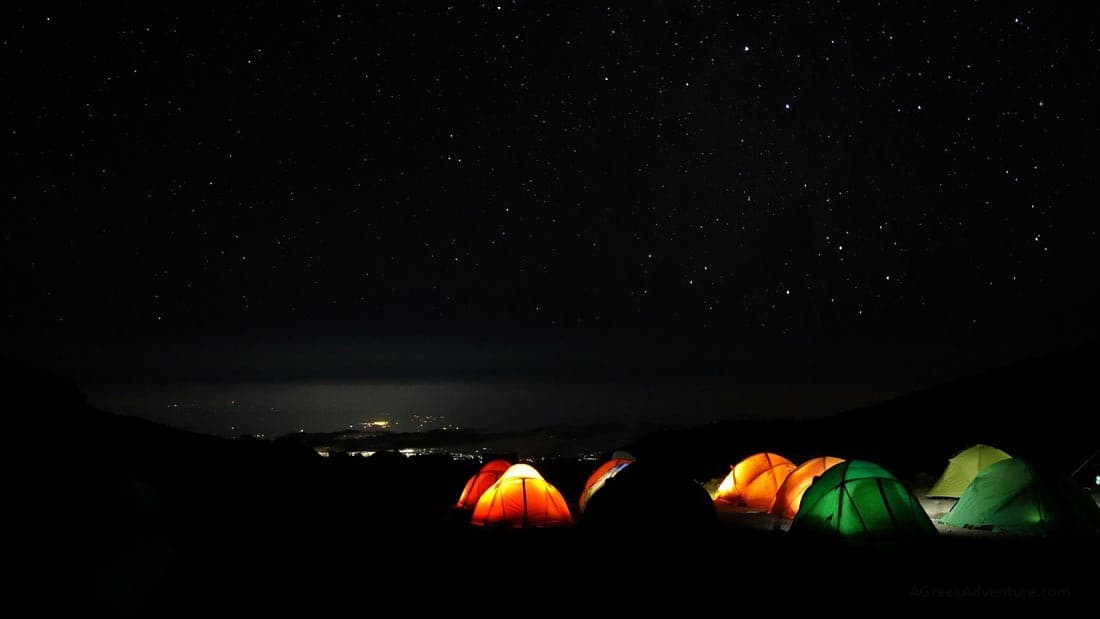
What Climbing Kilimanjaro Costs?
Don’t fall into the trap of finding the cheapest fee for climbing Mt Kilimanjaro.
There are lots of agents offering tour packages to the top and since they are a lot, prices vary. What happens when you see big fluctuations in prices? Worry.
There is a fee of around 800usd that you pay to Kilimanjaro National Park. That is something nobody can change.
Let’s say that you need around 6 days to do the hiking. That means no less in 800usd in fees only.
In that way, if someone asks you for 1100usd then something is going wrong. They will cut expenses and usually that cutting will be in quality of all sorts (guides, porters, good gear, food and more).
You may even get packed in a large group. That too engages many issues, safety being the first. A cheap price may take you climbing through the crowded routes.
There around 200 operators for Mount Kilimanjaro, so take offers and seek their reputation status. A normal total fee is usually around 1800usd (park fee included).
The fee is also influenced if you book overseas than on the spot. Yes, we know that that means spending extra days on the location to do your research, but keep that in mind too in relation to finding the reputable operator.
How to Find a Reliable Tour Operator for Climbing Kilimanjaro?
Once you choose your climb route, you need to find a reliable trekking agency since you can climb Kilimanjaro only with an experienced tour guide.
Knowledgeable climb operators will not only show you the most beautiful places, but they will also make sure you have what to eat and where to sleep.
They also teach how to get used to the altitude and celebrate your victories.
By the way, read our post for staying healthy when you travel.
When choosing a trekking agency, read reviews online.
Also, make sure your agency will provide you with camping equipment, food, and water on the way so that you will not have to worry about stuff.
Climbing with the operator is a great option. You will not need to carry anything but your backpack with a water bottle (but that also depends on the route), snacks, and a camera. All the other gear can be arranged with your operator, even sleeping bags.
However, you need to make sure that you will be provided with all the proper gear and understand what kind of gear you will need.
Kilimanjaro Climbing Gear List
Some of the basic gear (like boots and more) must be provided by you, while your operator will provide others. But, you need to know what gear you want. The gear changes depending on the season, of course. Here it is.
- A good camping tent that can take a beating
- A thermal sleeping pad
- A good sleeping bag (rated for no less than -10°C/four seasons)
- An extra sleeping bag liner for extra warmth
- Very good Goretex hiking boots
- Thick thermal socks (2 pairs or more) and some thinner ones.
- A good rain jacket
- A down jacket
- Two or there Fleeces
- Good trekking pants (a waterproof one and a regular one to use per weather, avoid leggings)
- Thermal under layers
- A wooly hat or a balaclava
- A good pair of hiking gloves and if your hands freeze easily maybe an extra set of hand warmers
- Long sleeve shirt and t-shirt (all long sleeve, even in summertime)
- Sunscreen and lip balm
- A cap or a sun hat
- Very good sunglasses
- Trekking poles
- Head torch
- Water bottles that sum up to no less than 3 liters
- A water filter/purifier or purification tablets are also a good extra
- A medical kit
How to Prevent Altitude Sickness when Climbing Kilimanjaro?
Altitude sickness, also known as mountain sickness, can affect people of all ages and fitness levels.
The symptoms of sickness are always the same: dizziness, vomiting, loss of energy, shortness of breath, nausea, and headache.
You may have some of these symptoms once you reach a high elevation. It takes up to a day for your body to adjust to the change in altitude.
There are a lot of factors that can put you at risk of developing altitude sickness. This risk depends on your age and physical condition.
It’s essential to know the symptoms of altitude sickness when you climb. It helps you to seek treatment before it’s too late.
People who ignore the signs may lose coordination and even fall into a coma.
So, if you don’t feel well when climbing higher, make sure to go down as soon as possible. Give your body a few hours to get used to the level of altitude.
Also, drink at least two quarts of water and eat more carbs. Other than that, avoid taking sleeping pills, drinking alcohol, and smoking while you are in the mountains.
Good quality food is essential for climbing. That is one more reason not to go cheap on your tour package fees.
Things to Know Before Climbing Kilimanjaro
You don’t need to be superfit to climb Kilimanjaro. You do need to be fit enough to walk. So the best pre-Kilimanjaro training is to walk a lot. Some of the people who easily succumb to altitude sickness are the superfit ones but don’t take that as a rule.
If you can walk on a hilly ground for 8 hours and then be fine the next day then you are quite fit for the mountain.
However, you need to have some things in order:
- Book your flights
- Organize your visa
- Have the required vaccinations (minimums include: measles, mumps, rubella, polio, tetanus, diphtheria, whooping cough, Hepatitis A, Typhoid). Depending on the activity and destination you may need to get vaccinated for Cholera, Meningitis (Meningococcal). Read this too.
Make sure to bring cash to tip the porters. Carrying things is a difficult job.
A lot of people wouldn’t be able to see the beauty of Kilimanjaro without guides and porters. So, tipping is the least you can do to support brave Tanzanians and their families.
Also, you may want to use your cash to pay for the optional bathroom tent (you might not find this information in other travel blogs!).
Another important thing is to bring some meds with you.
Remember that taking sleeping pills is not allowed.
But you can bring antimalarial pills, bug repellent, sunscreen, ibuprofen, toiletries, and something for traveler’s diarrhea.
It’s essential to ask your guide what you will be provided with on the way to the summit.
Climbing Kilimanjaro is an Adventure of a Lifetime!
No matter which route you take, you will be able to see beautiful nature and enjoy the silence of the mountains.
All you need to know is that you will make it to the top.
Let’s not forget that the oldest person to summit Kilimanjaro was Frenchman Valtee Daniel.
He was 87-year-old when he went to the summit of this iconic peak.
So, no matter how old you are, you can also conquer this African mountain at any time. Let the story of Valtee Daniel inspire you for new achievements!
Make sure you get travel insurance.
Also read:
